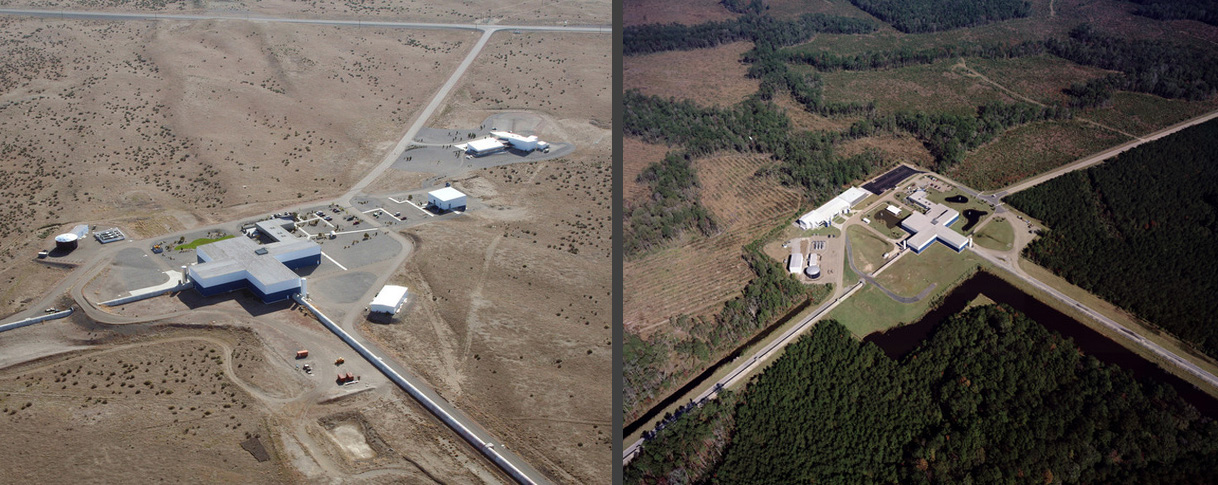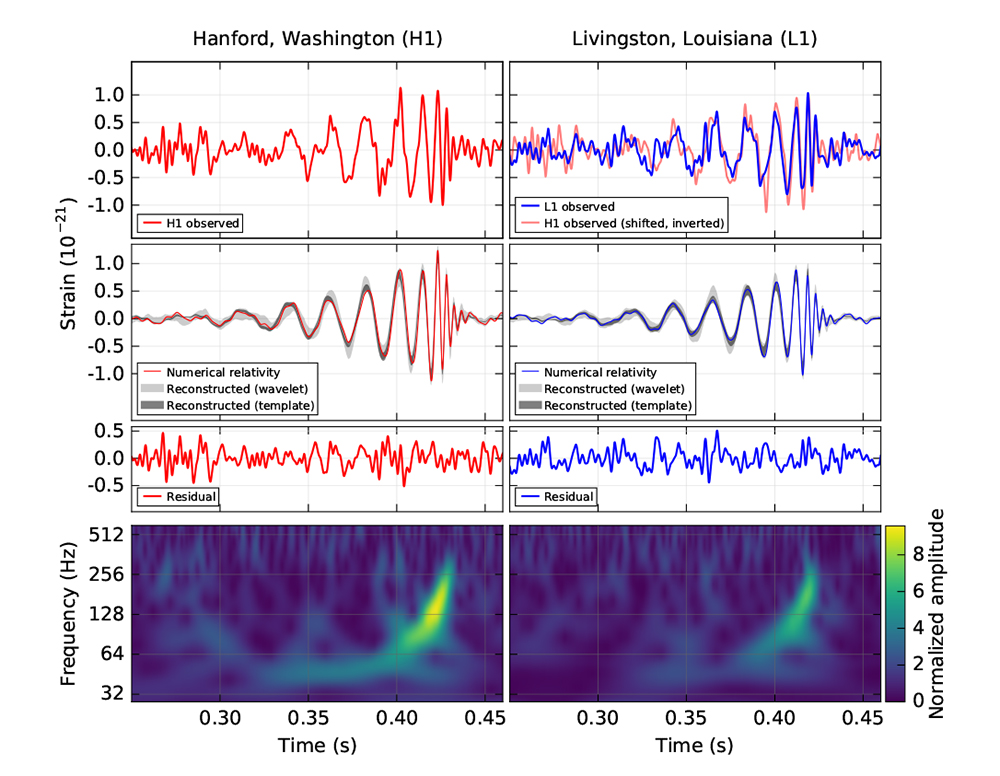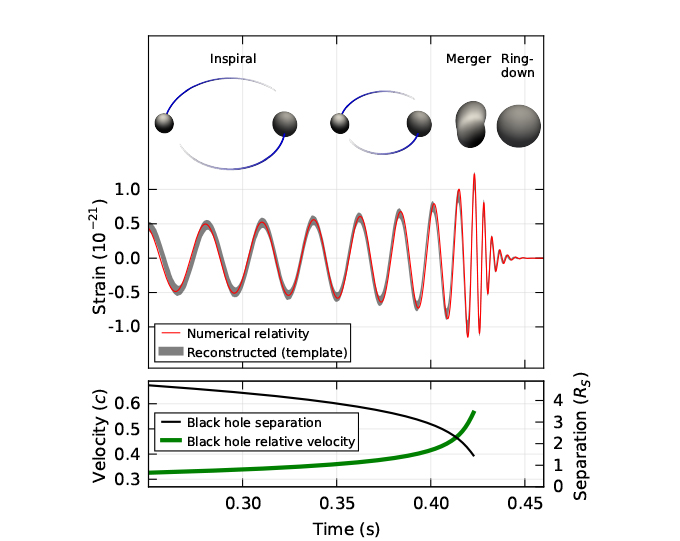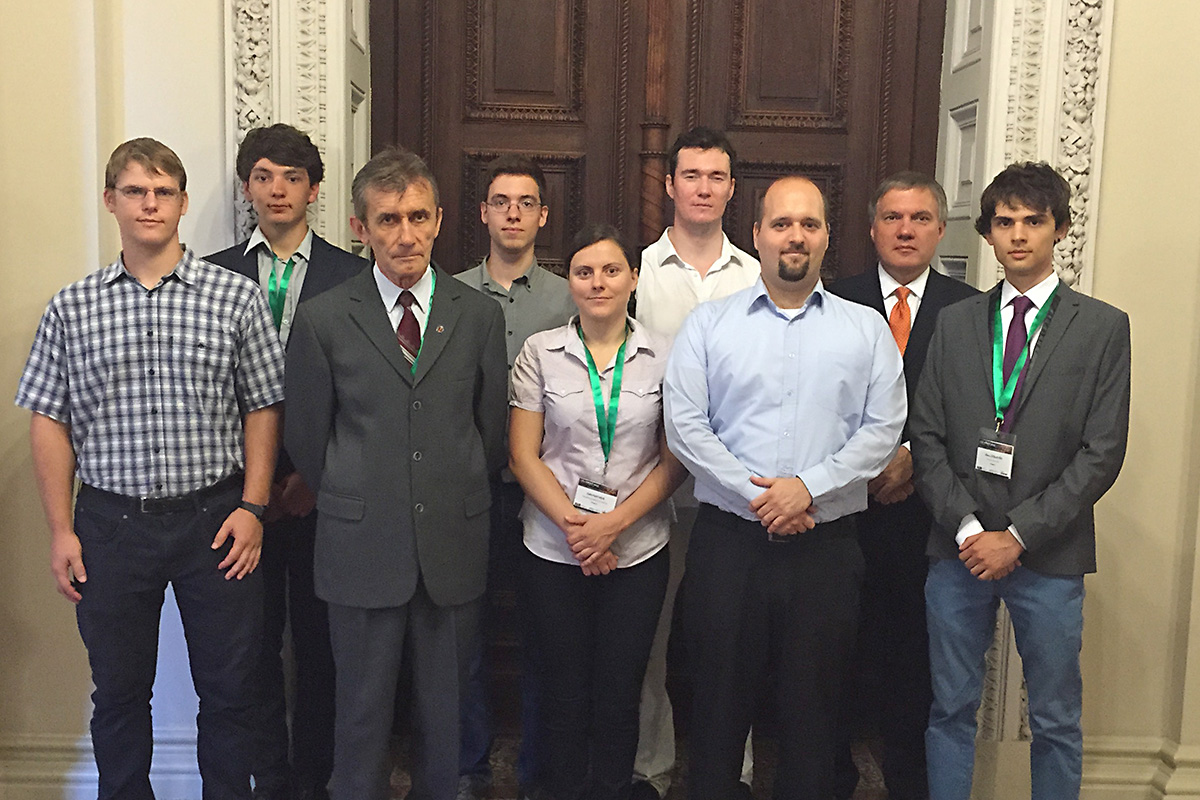Gravitational waves: three-in-one discoveries of world-wide importance in physics
Two black holes collided in a galaxy far away. During the event, an unprecedented amount of energy was released. The energy, equivalent to three thousand supernova explosions, was taken away by gravitational waves as predicted by Einstein a hundred years ago, and was possible to detect directly for the first time, which precisely depicted the dramatic circumstances of the collision.
Click here for the photos of the Press Conference.Gravitational waves have become discovered. This simple sentence covers a one-hundred-year old theory, several decades of equipment development, and an investment of more than one billion dollars. An essential scientific achievement was born advancing better understanding of the universe, a spectacular success thanks to basic research.
The discovery was made by the Laser Interferometer Gravitational-wave Observatory (LIGO), an international scientific collaboration. Both gravitational wave detectors received the same signal at the same time (signal-to-noise ratio of 24). The sensitivity of the detectors was greatly increased in 2015, and they almost instantly received the signal in September 2015.

The LIGO detectors in Hanford (left) and in Livingston (source: Caltech/MIT/LIGO Lab)
The observation of gravitational waves opens a new window to the universe: events never seen before can be detected. This has already been proved by the current data clearly.
The gravitational-wave signals were observed simultaneously by the two detectors of the Laser Interferometer Gravitational-Wave Observatory (LIGO) in Livingston (Louisiana, US) and Hanford (Washington, US) on 14 September 2015, at 10:51 a.m. according to current local time in Hungary (9:51 UTC). The LIGO observatories are funded by the National Science Foundation (NSF), they were designed, constructed and are operated by Caltech and MIT universities. The scientific article on the discovery was accepted for publication in the journal Physical Review Letters.
The energy of three thousand supernovae
The gravitational waves observed by the detectors were generated by the collision and merger of two black holes in a galaxy 1.2 billion light years away from the Earth. The original black holes had weighed 29 and 36 times the mass of the sun respectively, however, the object their merge created only 62 solar masses.
The animation above simulates how the black holes, the sources of the detected gravitational waves might have looked like if one had taken a closer look. The black holes can be neither seen through, nor seen inside, and they bend the space around them to such an extent that their gravitational lensing is apparent. The light of the stars behind them, passing by the black holes is greatly diverted, as if we watched the sky through moving, stick lenses. (Source: LIGO)
This means that three solar masses of material were converted into energy, what’s more, in a fraction of a second. The energy released by the event equals the energy of three thousand typical supernova explosions, or to use another analogy: it is 4 500 times bigger than what the Sun emits during its entire life (approximately 10 billion years). This makes it the event of most energy witnessed over the history of astronomy.

This figure is part of the article by LIGO and VIRGO collaborations recently published in the Physical Review Letters, and shows the exact signal the two detectors of LIGO observed in Hanford (left) and in Livingstone (right) in the USA on 14 September 2015. In the top line there are the raw signals (colour red marks, the Hanford, blue, the Livingston ones), under them the noise-freed signal can be seen, then comes the noise separately. The bottom contains the spectrum of the signals on a frequency-time scale. In the top right figure, the signals of Hanford and Livingstone are shown together depicted with a 6.9 millisecond shift on each other, that is, with the difference between the two arrival times. The ‘clear’ signals in the second line are overdrawn by a grey line, which is the theoretically calculated, expected signal wave the two merging black holes generated. The identity is striking!
Crazy dance of black holes
The collision ‘shook’ the space-time significantly, and the gigantic amount of energy was carried away by gravitational waves (the source does not have a counterpart with electromagnetic radiation). The characteristics of the detected waves also reveal that the two black holes merged dramatically fast. After going around each other for millions of years, the last eight rounds they did in only 0,2 second, while the last one took a mere 1/150 second. Before the moment of collision, at the meeting of event horizons, the two objects were 210 kilometres apart.

Here, the top line includes the three phases of the black holes’ merger: going round each other, the moment of collision, and the process of ‘dying down’, when the merged black hole is not completely spherical yet, and still emits gravitational waves. In the second line, the signal form can be seen, and the bottom part shows the distance between the two black holes (a declining grey line in the degree of the rays of the black holes), and their velocity (rising green line, given in the unit of the speed of light).
Hungarian contribution
The results were also contributed to by Hungarian researchers, as it is general in other fields of science as well. Several Hungarian research teams are members of the LIGO Scientific Collaboration, the firm making the discovery. The majority of the work in Hungary was carried out by the Eötvös Gravity Research Group headed by Zsolt Frei and formed in 2007. The group includes MTA and university researchers, and its operation was supported by the MTA, NKFIH, ELTE, the University of Szeged, and MTA Atomki as well.

Zsolt Frei’s colleagues in gravitational wave research: Dávid Nagy (ATOMKI), Bence Bécsy (ELTE), József Molnár (ATMOKI), Gergely Dálya (ELTE), Edit Fenyvesi (ATOMKI), László Gondán, Péter Raffai, Ákos Szölgyén (ELTE).
It is also necessary to mention the contribution made by MTA Wigner Research Centre for Physics, the researchers of which participated not directly in the work at LIGO but in the joint LIGO-VIRGO data-processing. More detailed information about the participation of Hungarian researchers can be read in the official press release.
A new window has been opened to the universe
Head of the Eötvös Gravity Research Group, Zsolt Frei told mta.hu: The current announcement includes at least three discoveries of world-wide importance. First, gravitational waves could be detected directly at last. Second, it is the first time we have a direct observation about the existence of black hole pairs, which merge within reasonable time. Third, a process of such a great amount of energy has never been perceived before in nature.
“As an astrophysicist, I have high hopes for the future when we will be able to detect similar waves on a regular basis, and conduct astrophysical research by the use of new devices. We have opened a new window to the universe, since so far we have only been able to observe the sky on the basis of electromagnetic interaction – being the light, radio waves, and x-rays different forms of its appearance. Now, phenomena so far impossible to observe on an electromagnetic basis, have become detectable, for example the merging of black holes,” the physicist said.
Zsolt Frei emphasised: It gives him great pleasure that Hungarian researchers contributed to the operation of LIGO. “I would like to highlight the work of my colleagues, head of data-processing in our group Péter Raffai from ELTE, or László Gergely, who, on leaving our team has recently formed an independent research group at the University of Szeged, and investigates the signal forms generated by merging black holes. The researchers at MTA Atomki gave support to the development of the detector, and the research group led by Mátyás Vasúth at MTA Wigner Research Centre for Physics also provided a valuable contribution to the operation of the European VIRGO detector,” he added.
The animation shows the extent to which the black holes bend space during merging, and generate gravitational waves. At the beginning, a large bending only occurs around (below) the black holes, near the end of a spiralling movement, however, the effects of the two black holes overlap, and at the moment of merging they ‘give a huge tug’ to the net of space: generating the largest waves this moment. At the end of the computer animation we can observe the outgoing gravitational waves, and the remaining, now ‘still’ black hole from above. (Source: LIGO)
